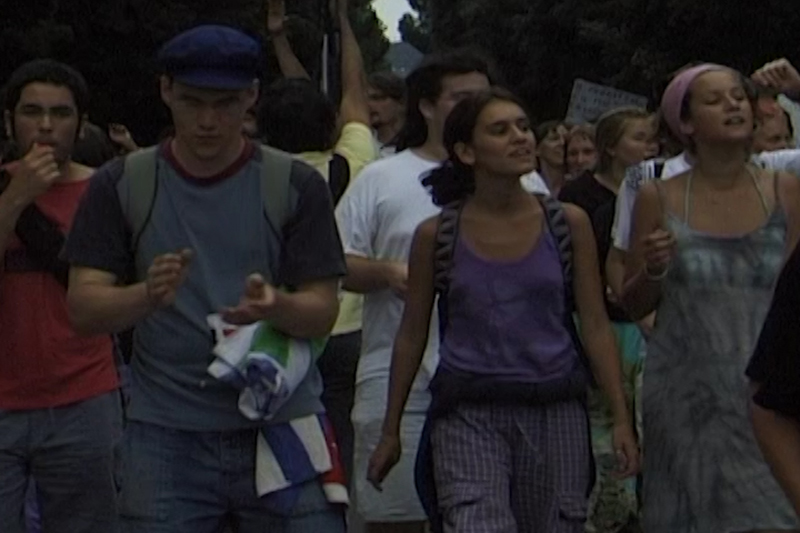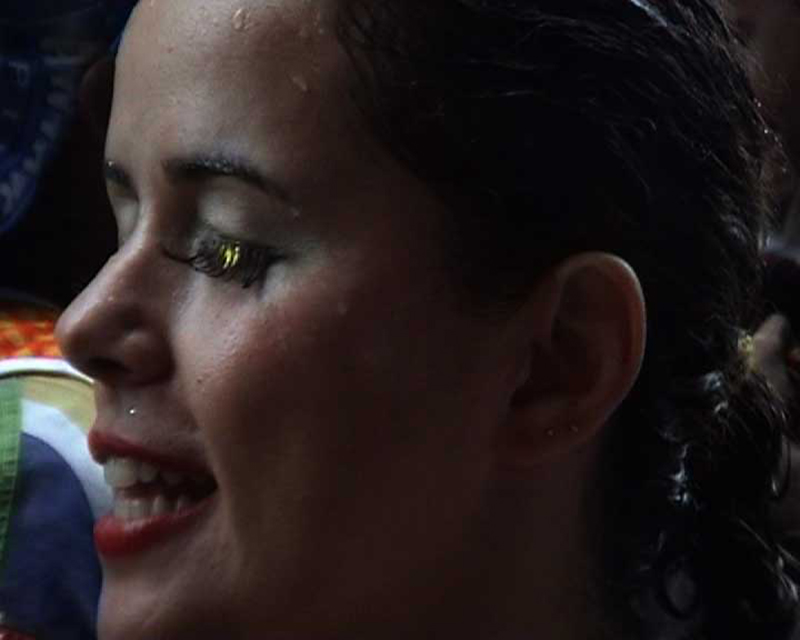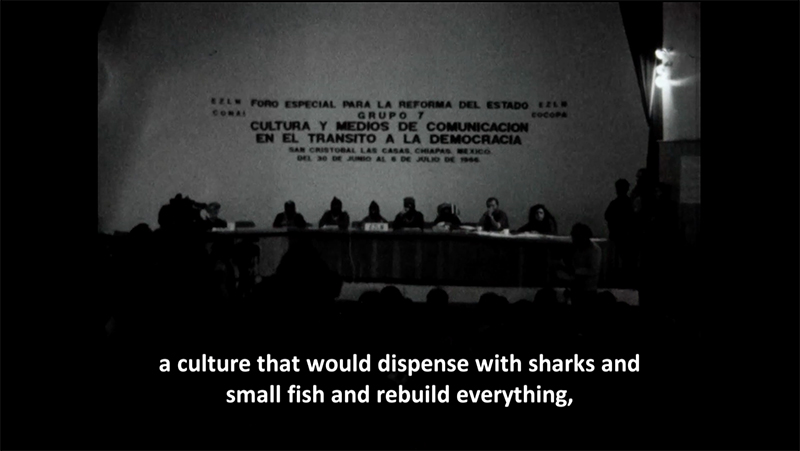by Benjamin Busch // May 27, 2022
Carola Spadoni’s work ‘The Peripatetic Film & Video Archive’ (2022) presents, through an elaborately conceived archival practice, decades of footage shot by the artist since the late 1980s. The word “peripatetic,” defined as “of, relating to, or given to walking” and “moving or travelling from place to place” (Merriam-Webster), is reflected in the artist’s practice of moving and documenting the world. The footage is organised in such a way that resists the constraining, formal logic of the archive, while promoting accessibility. According to the artist, the work—which exists as a multilayered website and until June 12th as an exhibition at Künstlerhaus Bethanien in Berlin showing film and video footage assembled by Spadoni—is intended to contribute to intersectional methods of archiving and serve as an accessible tool for emancipatory knowledge. Both the website and the exhibition topple formal hierarchies and present materials that already demonstrate the artist’s personal, embodied position in relation to the situations that she witnessed, for example through physical proximity to an event (i.e. inside vs. outside a crowd). The work is intended to be an archive for the commons that reflects the power, struggles, and positions of the content. The artist allows the viewer a space of their own in which to assemble meaning, both as a visitor to the website and the exhibition.

Carola Spadoni: ‘The Peripatetic Film and Video Archive, Chiapas EZLN Genova G8, senza rivoltelle, 1996-2021,’ Video Still // Courtesy of Carola Spadoni
Benjamin Busch: Recently, there has been a convergence in Berlin of different projects about archiving, including projects that look back on experiences that were historically excluded. Yet there is also a certain tension around archives here due to Germany’s past. Why archiving, why today?
Carola Spadoni: Berlin is a city that had to deal with a “Germany year zero” historically. It was divided, it was the place to escape military service in the 70s, and it fostered counterculture in a committed way, all the while maintaining an outdated Prussian heritage, hyper-bureaucratic approach, and thick discrimination dynamics. Here, compared to Rome where I’m from, history can acquire different shapes and weights. The preoccupation with dealing with history has been on the agenda of many, from institutions to project spaces to independent artists and authors. We who deal with stories, herstory and history from the margins, still have resourceful humus here, and hopefully our stories also expand into inclusive communities. To archive is to preserve, articulate and share perspectives, values, and knowledge for us to build on now and in the future.

Carola Spadoni: ‘The Peripatetic Film and Video Archive, TPF&VA n.0 Rio de Janeiro 2006,’ Video Still // Courtesy of Carola Spadoni
BB: Your archival work is a practice of commoning that makes accessibility a priority. In many ways, this is different from the typical understanding of an archive as a place that is protected from view. How has opening up the materials changed your understanding of what an archive can be?
CS: In describing it, I first wrote what it is not. Firstly, it’s not a system, as I’m very sceptical of the idea of a system and its embedded scientific aura. Systems as such, often unchallenged, have been used as domination tools. ‘The Peripatetic Film & Video Archive’ is an ongoing endeavour to form a platform and common its materials. It is a tool of emancipatory knowledge built on and around the moving images that are uploaded constantly. It is meant to let viewers in and proposes itineraries and affective mappings. I use symbols along with texts so as to expose the process of making an inventory and the tracing of genealogies. I left a certain degree of chaos in the aesthetic layout while also keeping a rigorous organisation of the contents. The inventory process has been a porous exercise in conceiving the entry words and the shores (categories) of the homepage. The porosity was influenced by the images. It was developed from watching the footage during the residency at Künstlerhaus Bethanien and understanding that the practice of constant shooting has been an act of trust in world making, an act that can be amplified in different contexts and can generate further critical gazes.

Carola Spadoni, ‘The Peripatetic Film and Video Archive, Chiapas EZLN Genova G8, senza rivoltelle, 1996-2021,’ Super 8 frame // Courtesy of Carola Spadoni
BB: The video ‘Chiapas EZLN/Genova G8, senza rivoltelle 1996-2021’ [senza rivoltelle = without guns] connects materials depicting the Zapatistas in 1996 with footage from the demonstrations in Genoa around the G8 in 2001. How do these materials from the past speak to each other, and what do they say to us in the present? The future?
CS: The Zapatista uprising in 1994 paved the way for enormous waves of political protests and unrest internationally. Many issues, rights and themes brought to the front by the so-called movimento no-global (anti-globalization movement) are still highly urgent today. In a brief exchange in the streets of Genoa, between an Indymedia demonstrator in drag (as Supervideo) and a Green political leader of the times, the latter says, “We will see in the future if we were right!” The thousands of people there were fighting for future change. We are now in that future and some of the issues they fought for and about have paved the way for new laws—green energy policies and natural resources preservation, LGTBI+ rights—that have been used by mainstream policy makers. Many of these issues and demands have also entered academia as well as art and cultural institutions. They have meanwhile acquired different words and languages and are often squeezed into stiff patterns and presentation grids. The Zapatistas founded a political and revolutionary organisation with programs and manifestos that have always been checked and agreed upon by their local communities. Their decision-making process speaks a lot to the ways indigenous people and original keepers of the land take on political responsibilities and how they manage in their own roles beyond western mainstream patterns. Just last year the Zapatistas decided to travel from Mexico to Europe by sea for an explicit decolonial program of encounters. It’s still by “asking while walking,” as Zapatistas teach, that the many issues can stay in focus, develop into communal values, and forge alliances. This is an attitude and practice that reminds me of the programs in some high profile western museums and institutions engaged to open up their operations to decolonial thinking and education.
Exhibition Info
Künstlerhaus Bethanien
Carola Spadoni
Exhibition: May 19-Jun. 12, 2022; Tue-Sun: 2-7pm
bethanien.de
Kottbusser Str. 10, 10999 Berlin, click here for map






















